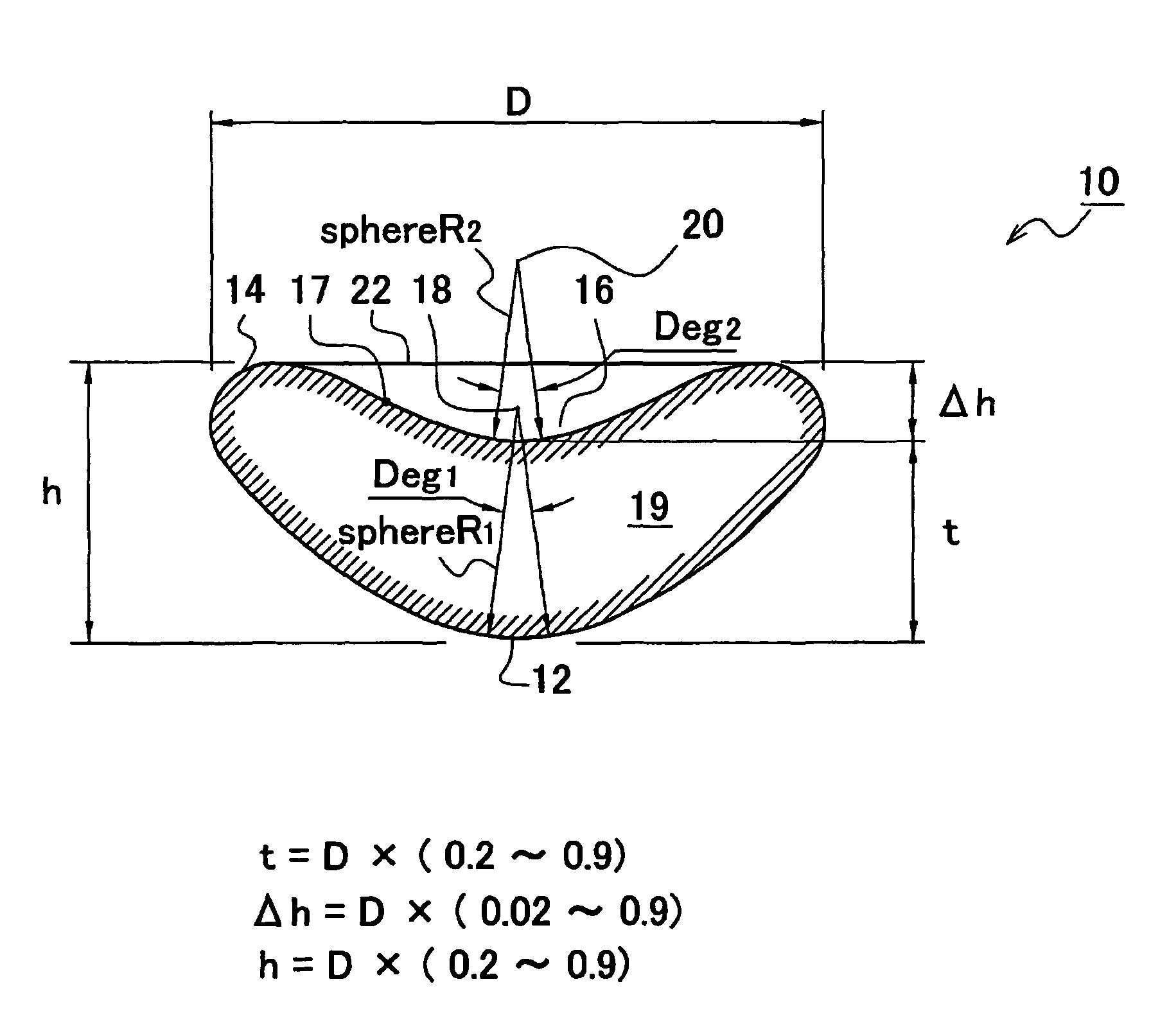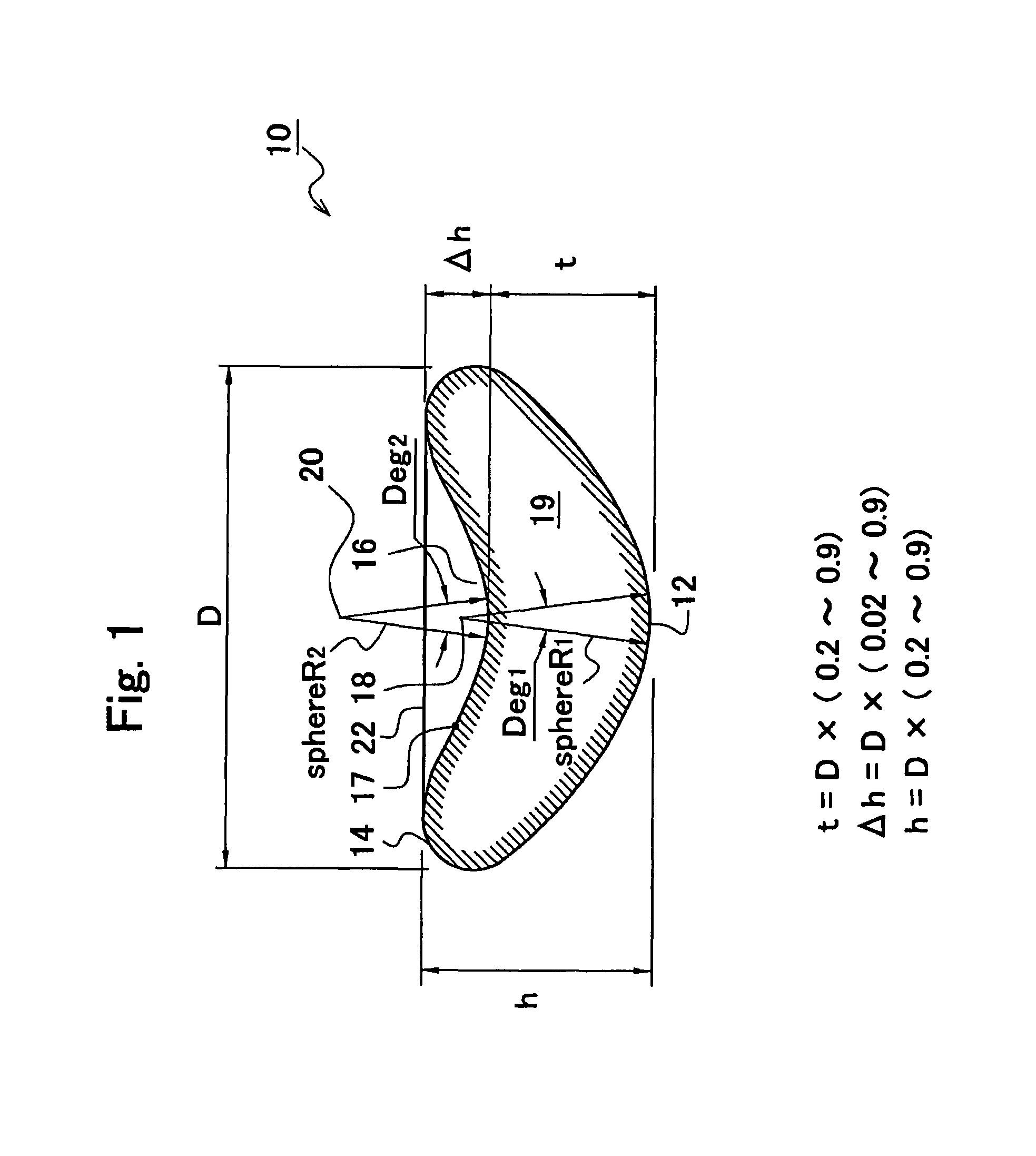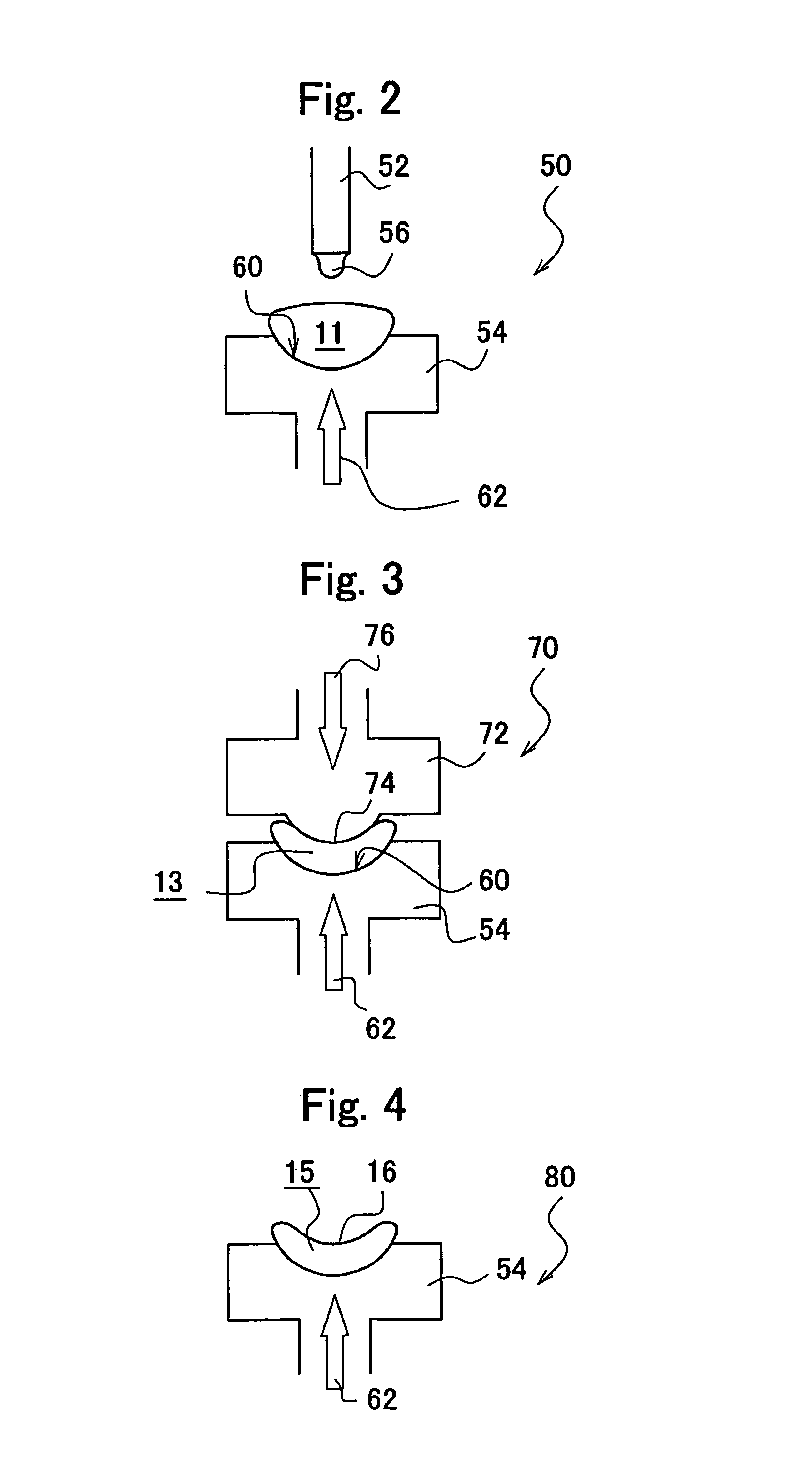Preform for optical element and optical element
a technology of optical elements and molds, applied in the field of optical elements, can solve problems such as unstableness, and achieve the effects of reducing the percent of defective molds and prolonging the mold li
- Summary
- Abstract
- Description
- Claims
- Application Information
AI Technical Summary
Benefits of technology
Problems solved by technology
Method used
Image
Examples
example 1
[0083]Melting was conducted in a glass melting furnace to give the glass melting temperature of 1100 to 1300° C., while a nozzle 52 at the leading end of a pipe was heated at a temperature of 900 to 1200° C. Next, a lower mold half 54 was disposed immediately below the nozzle 52, and a glass block 11 was dropped, or elevated to approach the nozzle 52. When the concave molding face of the lower mold half 54 was filled with the molten glass accordingly, the lower mold half 54 was lowered. The molten glass was cut then to obtain a glass block 11.
[0084]The material of the lower mold half 54 was a porous metal, and emits any one of inert gases such as air, oxygen, nitrogen, argon and the like or any mixed gas thereof at 0.5 to 10 L / min. The lower mold half 54 holding the glass block 11 was pressed with the upper mold half 72 to obtain a preform for an optical element 13 having a concave part. In this example, two kinds, i.e., a silica-boric acid based or lanthanum-based optical glass wer...
example 2
[0085]A glass block 11 was obtained with a lower mold half 54 with no emission of a gas under a temperature condition that is similar to Example 1. The lower mold half 54 holding this glass block 11 was moved immediately below an upper mold half 72 provided with fine pores that emit the gas, and simultaneously, was pressed by a pressing face 74 of the upper mold half 72 disposed at an opposing position under a condition of the glass surface temperature of 800 to 1150° C. Thus, a preform for an optical element 13 having a concave part was obtained.
[0086]In the pressing method, pressing against an open face of the glass block 11 was serially conducted for 1 to 10 sec. Surface of the preform for an optical element 13 having a concave part obtained according to this method was a smooth mirror face.
[0087]The glass preform produced in this manner had a center wall thickness being 0.3 times of the external diameter, a depth of the concave part being 0.06 times of the external diameter, and...
example 3
[0088]A preform for an optical element having a biconcave part was obtained through manufacturing according to a similar method to Example 1 except that the lower mold half in Example 1 was changed to a lower mold half having a convex shape. In this Example, two kinds, i.e., a silica-boric acid based or lanthanum-based optical glass were used as an optical glass composition.
PUM
| Property | Measurement | Unit |
|---|---|---|
| diameter | aaaaa | aaaaa |
| diameter | aaaaa | aaaaa |
| diameter | aaaaa | aaaaa |
Abstract
Description
Claims
Application Information
 Login to View More
Login to View More - R&D
- Intellectual Property
- Life Sciences
- Materials
- Tech Scout
- Unparalleled Data Quality
- Higher Quality Content
- 60% Fewer Hallucinations
Browse by: Latest US Patents, China's latest patents, Technical Efficacy Thesaurus, Application Domain, Technology Topic, Popular Technical Reports.
© 2025 PatSnap. All rights reserved.Legal|Privacy policy|Modern Slavery Act Transparency Statement|Sitemap|About US| Contact US: help@patsnap.com



